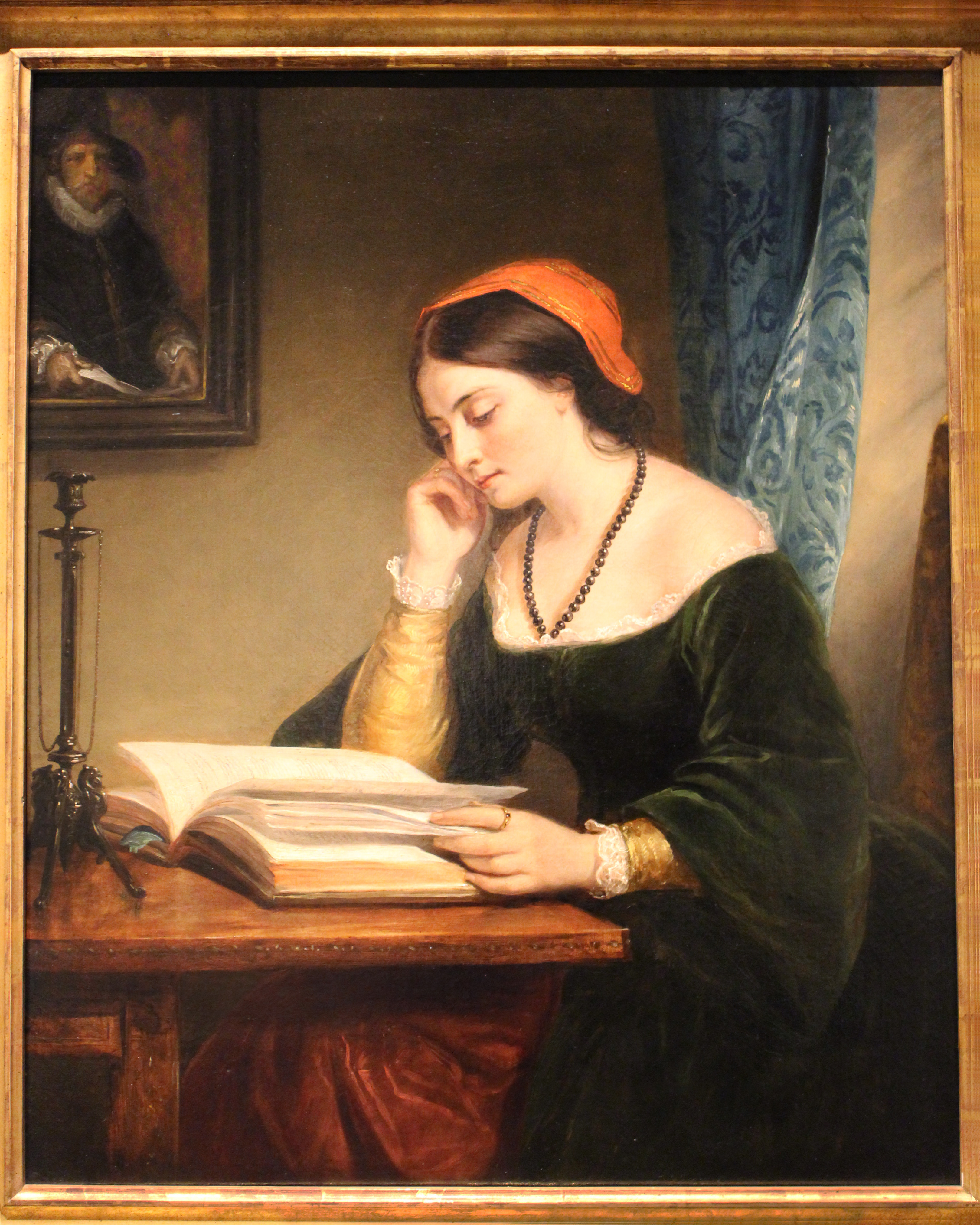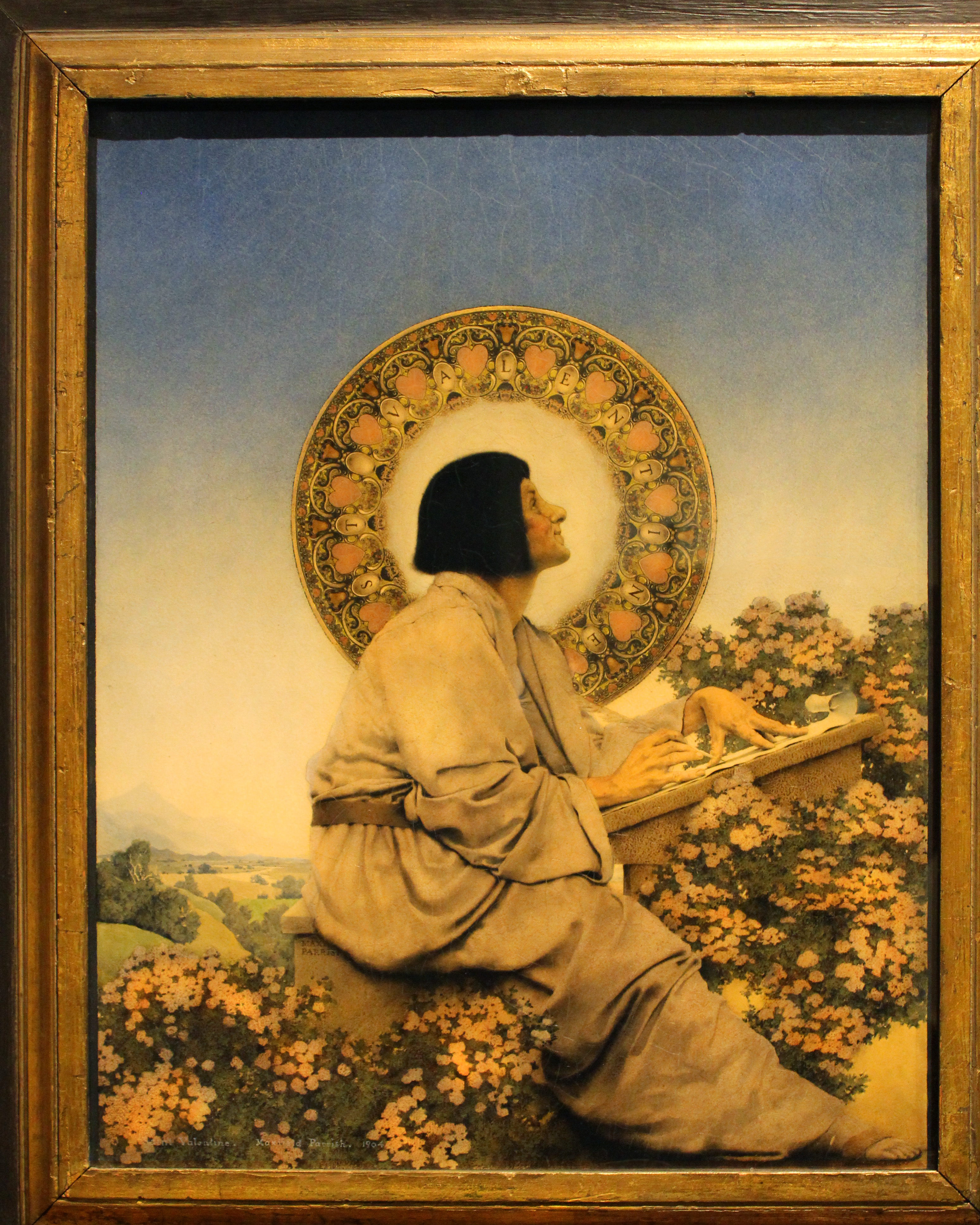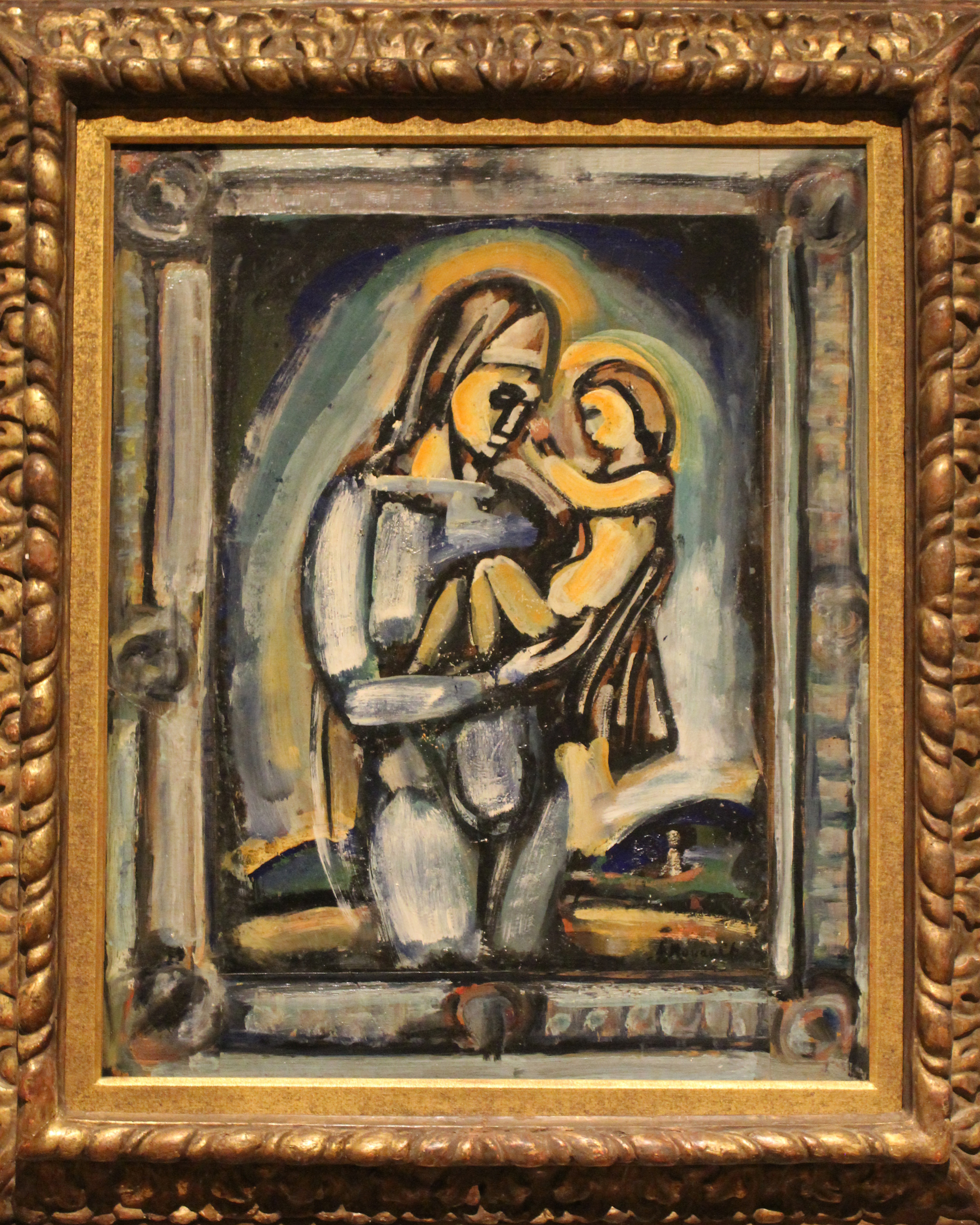
Sunday, May 26, 2019
Still More Fascinating Art Seen at Dayton Art Institute
11:30am
Most of the pieces I share today are from the 20th century:

"The most familiar artist to me, growing up in a working-class family in Saint Louis, was certainly Maxfield Parrish, whose calendars or posters would have been found above the refrigerators in the kitchens of my childhood. Saint Valentine was commissioned as a cover for Life magazine and based on a photographic self-portrait by Parrish. The artist lost no sleep over the idea that using a photographic source might be 'cheating,' nor did he worry too much about any bias towards fine art versus illustration, a distinction that has lost much of its certainty. The primacy of imagination was the driving force in Parrish's work, as is evident in his statement 'People need outlets for their imagination. They need windows for their minds. Artists provide them.'" - (John Moore, NA, via info card)
"Parrish's art is characterized by vibrant colors; the color Parrish blue was named after him. He achieved such luminous color through glazing. This process involves applying alternating bright layers of oil color separated by varnish over a base rendering.[5] Parrish usually used a blue and white monochromatic underpainting.[8]
"Parrish used many other innovative techniques in his paintings. He would take pictures of models in black and white geometric prints and project the image onto his works. This technique allowed for his figures to be clothed in geometric patterns, while accurately representing distortion and draping. Parrish would also create his paintings by taking pictures, enlarging, or projecting objects. He would cut these images out and put them onto his canvas. He would later cover them with clear glaze. Parrish's technique gave his paintings a more three-dimensional feel.[19]
"The outer proportions and internal divisions of Parrish's compositions were carefully calculated in accordance with geometric principles such as root rectangles and the golden ratio. In this Parrish was influenced by Jay Hambidge's theory of Dynamic Symmetry.[20]"(From Wikipedia)
 Self Portrait, 1937 Paul Starrett Sample, Louisvile, KY 1896 - 1974 Hanover, NH Oil on canvas ANA diploma presentation, National Academy, January 18, 1938 |
"His depictions of the life of rural New Englanders and the importance of the relationship between the people and the land became a lens through which the culture of American agriculture could be seen, and illustrated his amalgamation of Social Realism and Regionalism. Some scholars suggest that Sample's employment of large-scale and rounded forms is clearly derivative of the Flemish Painter Pieter Brueghel the Elder. Sample made use of lateral framing, plunging perspective, and rhythmic groupings. His compositional style also reflects the influence of regionalist artists including Thomas Hart Benton and Grant Wood." (From From The Caldwell Gallery, written and compiled by Hali Thurber)
The following painting was done roughly the same time as Sample's portrait, but what a different style!
Rouault's "work is often associated with Fauvism and Expressionism." "Rouault also met Henri Matisse, Albert Marquet, Henri Manguin, and Charles Camoin. These friendships brought him to the movement of Fauvism, the leader of which was considered to be Matisse." (From Wikipedia)
"Rouault was one of the few artists of late nineteenth- and early twentieth-century France to paint religious subjects, which had fallen out of favor in an increasing secular society. His use of frontal or profile compositions, as seen in this work, recall those found in Medieval paintings of the Madonna and Child..." (From info card)
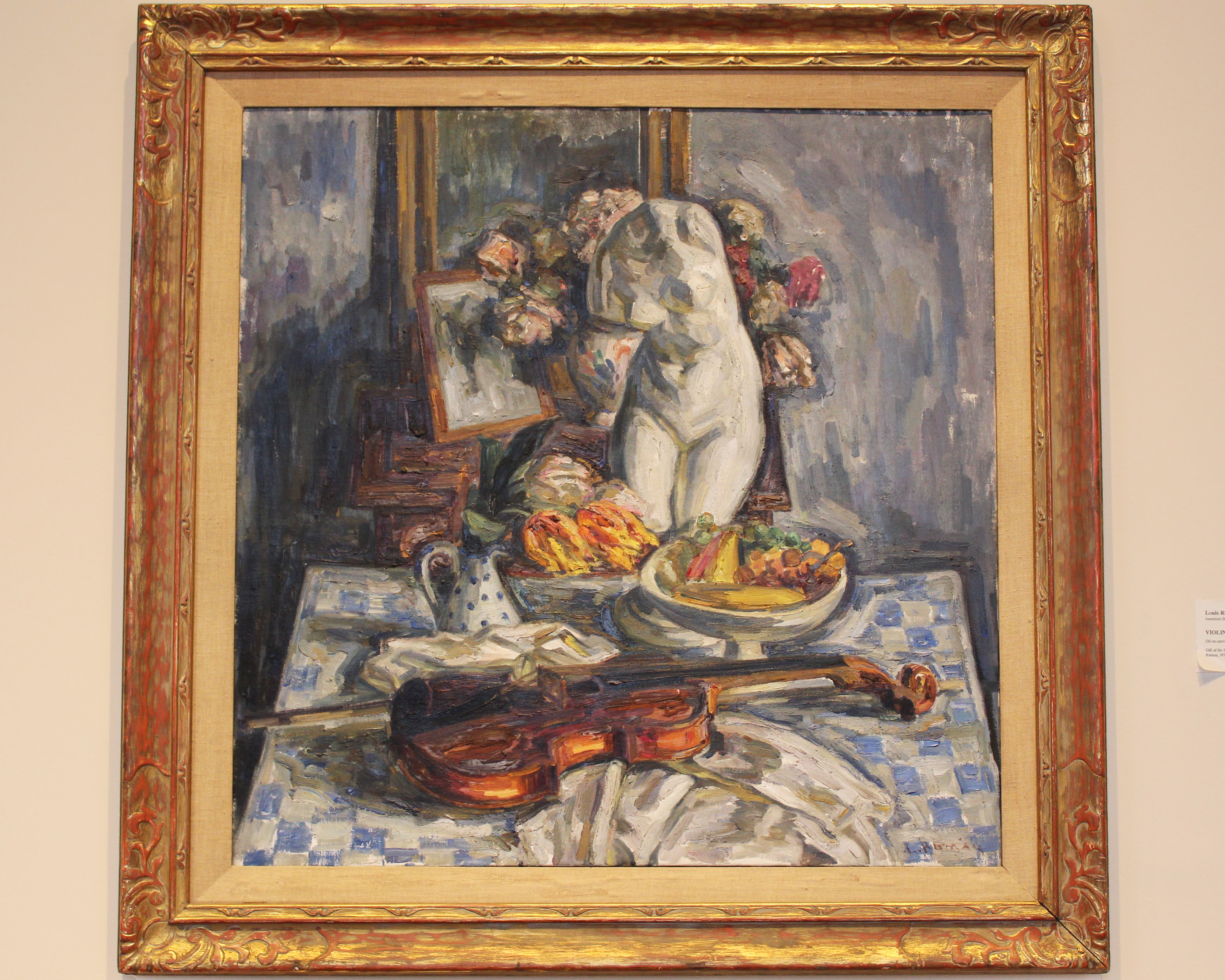
Violin Arrangement, 1940-1950
Louis Ritman, (Kamianets-Podilskyi, Russia (now Ukraine) 1889 - 1963 Winona, Minnesota)
Oil on canvas
Gift of the Estate of Louis Ritman in memory of his sister-in-law, Mrs. Rose Ritman, Dayton Art Institute #1975.24
Louis Ritman "was an American impressionist painter. He is best known for his female nudes, painted in a fashion similar to that of his friends Frederick Carl Frieseke, Lawton S. Parker, and Richard E. Miller, all American artists who studied and lived in France." But later, the "influence of Paul Cézanne may be seen in the more structural, blocky brushstrokes of paintings after the mid- 1910s." (From Wikipedia)
His "Violin Arrangement" definitely shows Cézanne's influence.
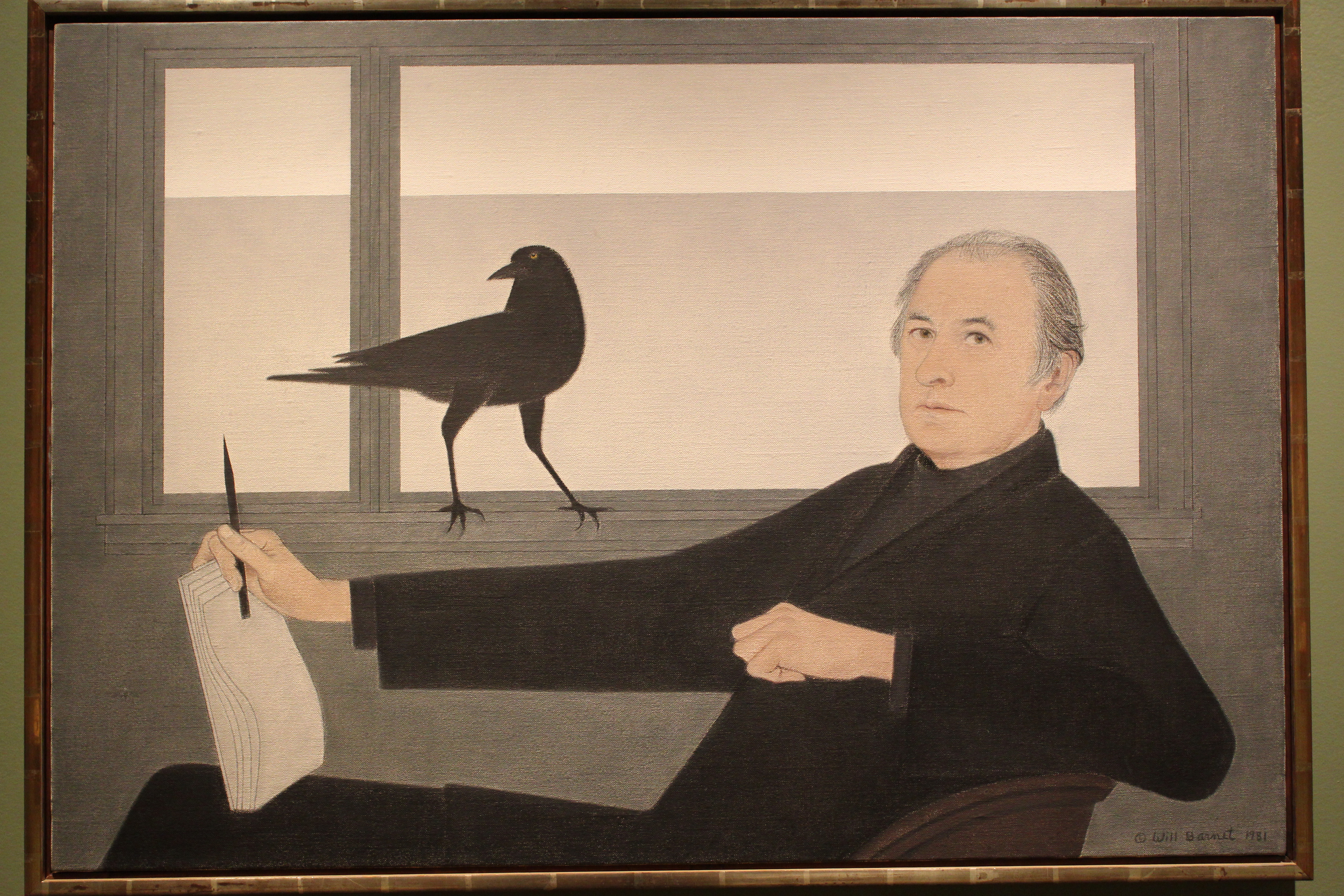
Self-Portrait, 1981
Louis Ritman, (Beverly, Massachusetts 1911 - 2012 New York City)
Oil on canvas
ANA diploma presentation, National Academy, April 6, 1981
Through out his long career, Barnet has worked in a great variety of styles. In "the 1930s he was a social realist, in the 1940s a Modernist, in the 1950s an Abstract Expressionist and in the 1960s and onward he settled on a representational minimalism honed from the refinement of his earlier explorations."
"His works have entered virtually every major public collection in the United States, including, the National Gallery of Art, the Metropolitan Museum of Art, the Whitney Museum of American Art, the Museum of Modern Art, New York, the Museum of Fine Arts, Boston, the Philadelphia Museum of Art, The Jewish Museum, and the San Francisco Museum of Modern Art. He has been the subject of over eighty solo exhibitions held at the Virginia Museum of Fine Arts, the Museum of American Art of the Pennsylvania Academy of Fine Arts, the National Academy of Design Museum, the National Museum of American Art, Montclair Art Museum, the Boca Raton Museum of Art, Crystal Bridges Museum of American Art, and the Worcester Art Museum, among others." (From Wikipedia)
Examples:
Ruth Bowman,1967, at MMA)
Henry Pearson,1967, at MMA)
Kiesler and Wife,1963–65, at MMA)
Self Portrait, 1967, at Boston's MFA)
(The MFA curator doesn't know of the NA 1981 self portrait.)
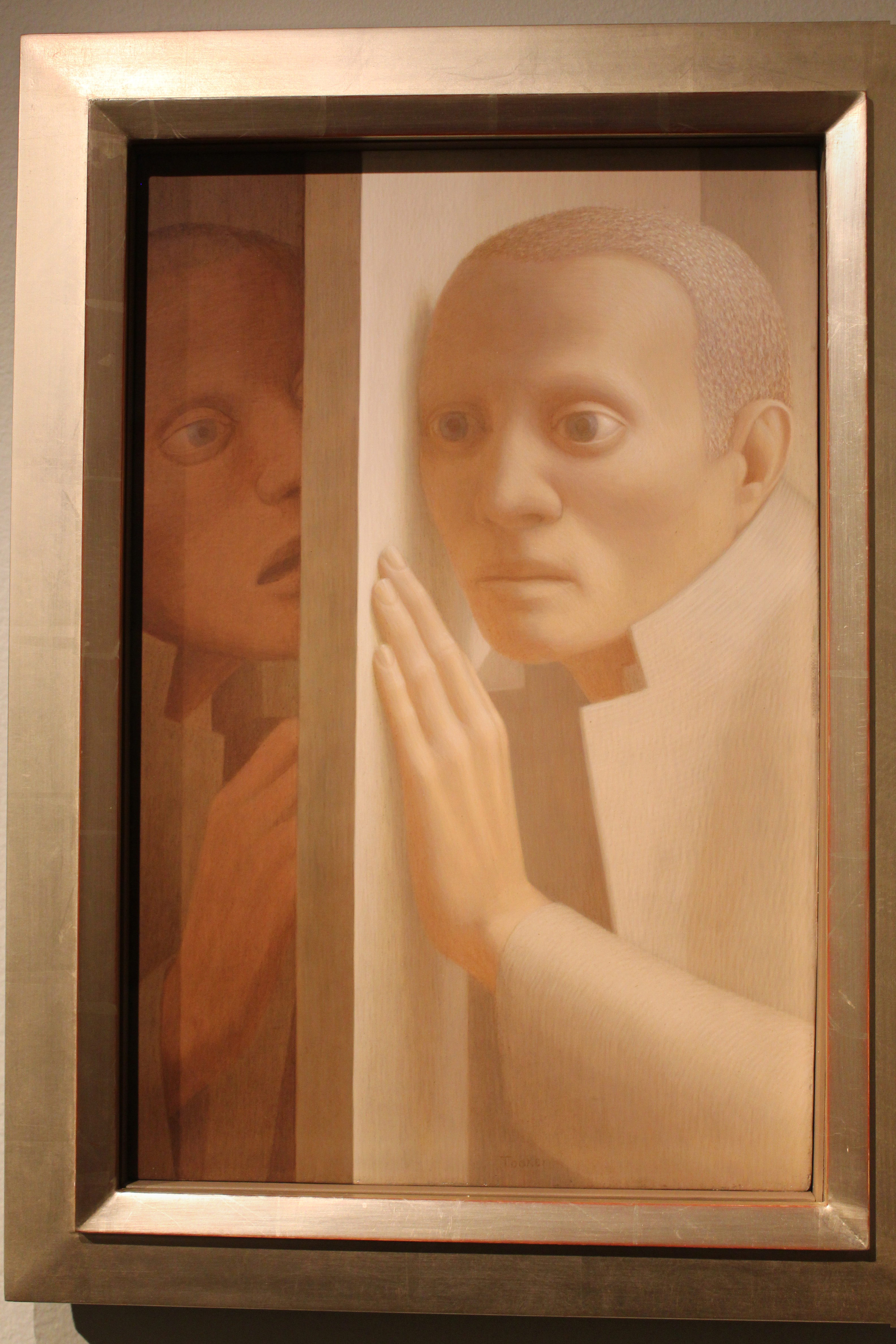 Voice II, 1972 George Tooker, (New York City 1920 - 2011 Hartland, VT) Egg tempera on gessoed panel National Academy, NA diploma presentation, Octobrt 2, 1972 |
This theme is one Tooker did more than once. Voice I was done in 1963–1963, and Pennsylvania Academy of Fine Arts has a lithograph in black ink on buff paper which he did in 1977, #2007.11.
What is the voice the listener hears? Is it a spirit? Some cultures have methods which they use to lure protective spirits, such as in Thailand:
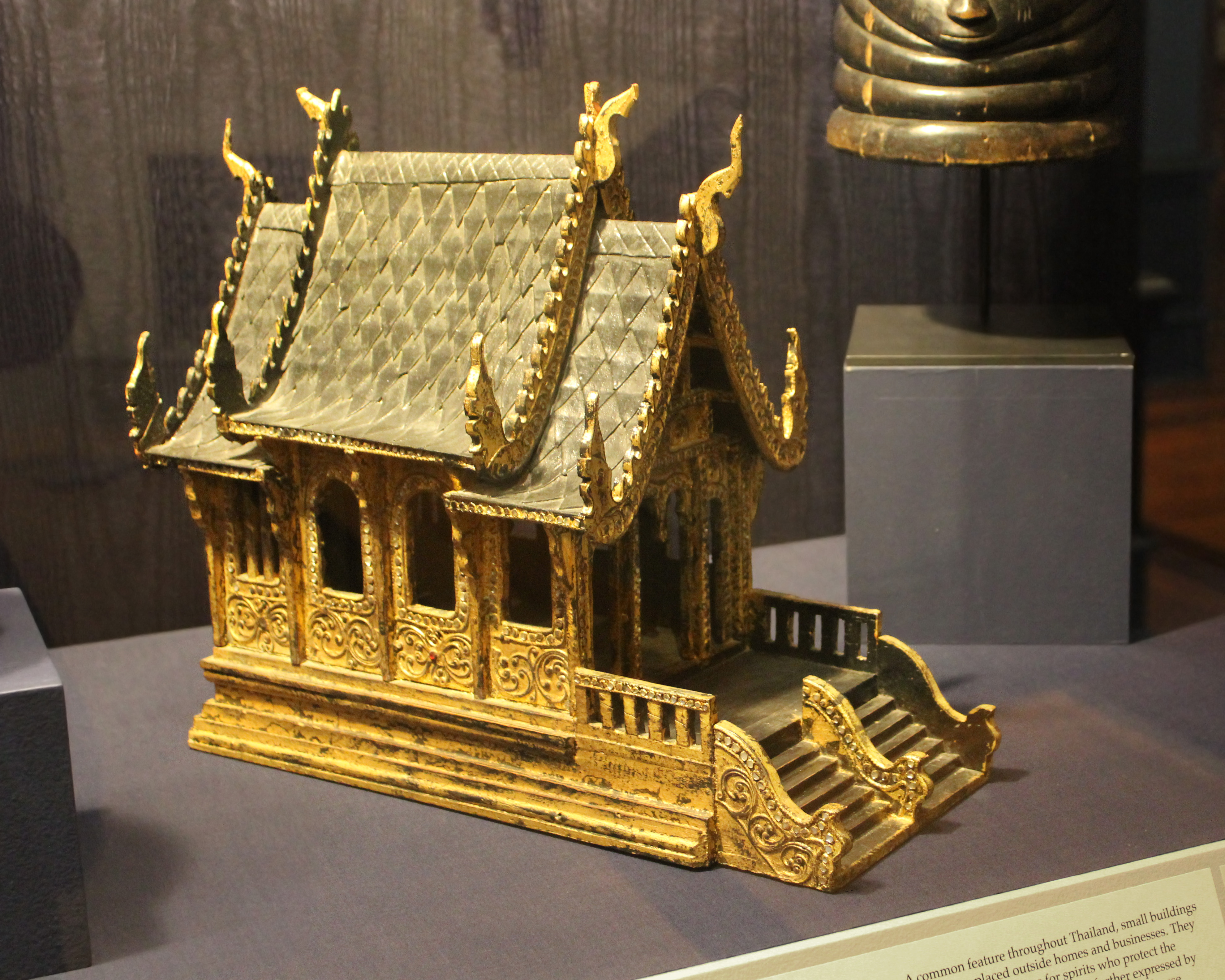
Spirit House, 19th-20th century
Unknown artist from Thailand
Wood with lacquer and goold
Gift of Mrs. Virginia W. Kettering, Dayton Art Institute #1996.117
"A common feature throughout Thailand, small buildings like this are placed outside homes and businesses. They serve as dwelling places for spirits who protect the people living nearby. Devotion is further expressed by placing food, drink, and flowers around the house."(From info card)

